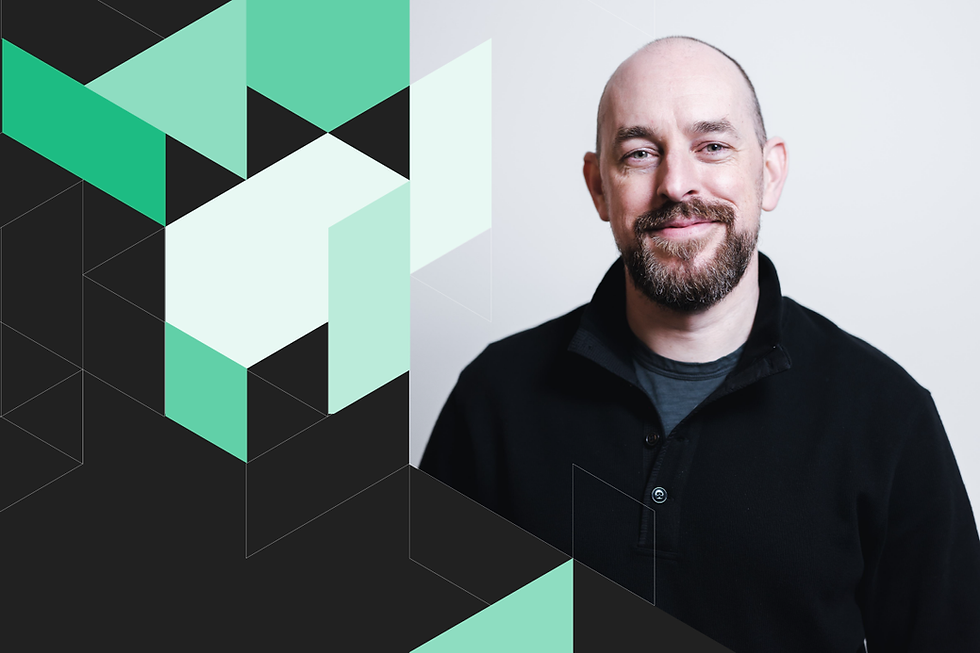The Enterprise Developer Journey Isn’t Linear Anymore. It’s Orchestrated.
- Tom Williams

- Aug 12
- 3 min read
Updated: Aug 14
Tom Williams, Partner
TL;DR:
The enterprise developer journey is no longer linear; it’s a collaborative, cross-functional process requiring strategic orchestration from developer marketers like you. As more roles influence technology decisions, developer marketing must evolve to support distributed decision-making with clarity, flexibility, and precision.
What you’ll learn in this article:
Why the traditional funnel no longer fits enterprise developer buying behavior
How multiple stakeholders influence the developer journey in real time
How to design campaigns that speak to diverse technical and business roles

How to Orchestrate Multiple Influences on the Enterprise Developer Marketing Journey
For a long time, developer marketers have followed a tidy, sequential narrative. One user, one path: discover, evaluate, learn, build, scale, advocate. It made sense when you were targeting a single persona. It even made sense for startups and small teams, where the same person might be trialing the API and making the purchasing decision.
But in the enterprise world, this model has lost its footing. The developer journey is neither linear nor singular; it’s collaborative, asynchronous, and often chaotic. It’s a distributed decision-making network with overlapping signals, stakeholders, and priorities.
What this means for marketers is that it requires orchestration. This is both a challenge and an opportunity.
From Straightforward Funnels to Nebulous Networks of Influence
Enterprise developer adoption today looks more like a dynamic network than an end-to-end pipeline. A developer might be exploring a sandbox environment while a tech lead is testing the API’s performance. At the same time, a solutions architect could be watching a webinar to assess system compatibility, while a product manager compiles findings into a decision document, a compliance officer is reviewing security documentation, and a C-level executive is consulting ChatGPT for a side-by-side analysis.
This is a real-time, multi-threaded negotiation between stakeholders with different entry points, priorities, and expectations. In fact, recent data shows that 80% of B2B technology purchases now involve at least four stakeholders. Nearly a third require coordination across 8 to 12 people. And 11% of enterprises are making decisions with 20 or more participants in the room.

It’s not just that more people are involved. It’s that they bring vastly different concerns to the table. According to SWZD’s 2025 Tech Buying Committees analysis, IT roles emphasize technical compatibility, scalability, and compliance. Business roles, meanwhile, are focused on ROI, time-to-integration, and strategic alignment. This is the dynamic your marketing assets must be designed for.
What Successful Developer Marketing Orchestration Looks Like
To be clear, this shift doesn’t invalidate the developer journey. Developers still want to get hands-on with the product. They still need access to code samples and self-serve tools. But in the enterprise space, their experience exists within a larger, shared matrix. One in which each role interacts with the product in their own way, for their own reasons.
At Catchy, we’ve evolved our approach accordingly. Instead of mapping a clean line from developer awareness to adoption, we now identify influence surfaces and key moments when various roles encounter the product or content. We design developer experiences for overlap, ensuring that each persona finds what they need without disrupting the others. And most importantly, we build momentum across the entire decision group.
This approach is rooted in the reality of modern DevRel. The 2024 State of DevRel Report shows that 39% of developer relations teams collaborate with Product teams weekly. The same percentage connects with Engineering teams on a weekly basis, and 35% are in regular contact with Marketing. These are deeply cross-functional partnerships, and marketing strategies must reflect that.
Developer Experience Orchestration Means Designing for Distributed Influence
In this environment, the role of developer marketing is not to push a single persona down a predefined path. It’s to orchestrate clarity and confidence across a diverse set of decision-makers. That means creating content ecosystems rather than nurture tracks. It means offering adaptive experiences tailored to stakeholder roles and use cases. And it means measuring influence, not just conversion.
The teams that thrive in enterprise developer marketing will be those that move beyond linear journeys and monolithic messaging. Orchestration represents a fundamental shift in how developers and their organizations evaluate what’s next.
We can help you plan for and build campaigns that embrace this complexity. If you’re ready to move from funnels to full ensembles, we’re ready to show you how.
Connect with Catchy to book a Developer Experience workshop.



